- Home
- Institut Néel
- Research teams
- Technical Groups & Services
- Work at the Institut
- Partnerships
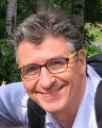
Our research team aims at establishing a unique innovative platform for creating, manipulating and detecting single-electron wave packets in semiconductor quantum circuits and exploit them for quantum technologies.
Control and coherent manipulation of single electrons is one of the important ingredients towards single-electron circuitry as well as the realization of flying qubit architectures using single electrons. The advantage of performing quantum-optics-like experiments with flying electrons is the existing Coulomb coupling between the electrons. Photons are basically non-interacting quantum particles and they therefore have a longer coherence time than electrons. However, due to the absence of interactions it is more difficult to construct a two-qubit gate, which operates at the single photon level. In addition, the fact that electrons travel 1000 times slower than the speed of light, electronic flying qubits can be manipulated in flight.
Further reading
– C. Bäuerle et al. , Coherent control of single electrons: a review of current progress, Rep. Prog. Phys. 81 056503 (2018)
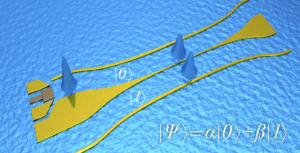
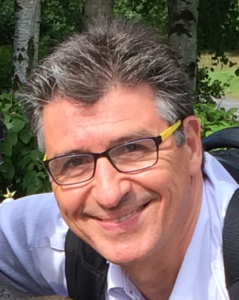
Christopher BÄUERLE is Research Director at the NEEL Institute – CNRS, Grenoble. He received his B.S degree in 1990 from the University of Karlsruhe, Germany, his M.S. degree in 1992 from the University of Massachusetts, Amherst, USA and his PhD degree in 1996 from the University Joseph Fourier, Grenoble, France. After working for two years at the University of Tsukuba and the University of Tokyo, he joined the NEEL Institute in 1998. He made significant contributions to the field of symmetry-breaking phase transition using ultracold superfluid 3He as well as to the understanding of phase coherence in mesoscopic systems. More recently his research interests focus on single-electron transport using surface acoustic waves as well as ultrashort charge pulses.
Our understanding of quantum mechanics has now reached a level such that it can be exploited for unprecedented applications, e.g. quantum cryptography, quantum-enhanced sensing or quantum computing. The most common approach manipulates discrete states based on localised two-level systems often called “artificial atoms”. In our research team we will explore the dynamics of “artificial quantum particles” that propagate coherently in a solid-state device. Using these flying particles, we will pioneer new concepts at the crossroads between quantum optics and solid-state nanoelectronics.
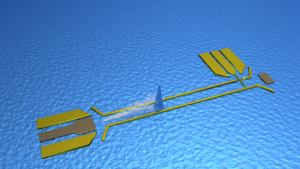
Coherent manipulation of single electrons in solid-state devices is attractive for quantum information purposes because they have a high potential for scalability. Depending on the system used, the charge or the spin may code binary qubit information. A particular appealing idea is to use a single flying electron itself as the conveyor of quantum information. Such electronic flying qubits allow performing quantum operations on qubits while they are being coherently transferred.
Further reading
– C. Bäuerle et al., Coherent control of single electrons: a review of current progress, Rep. Prog. Phys. 81 056503 (2018)
– P. Delsing et al., Surface acoustic wave roadmap, Topical Review, J. Phys. D: Appl. Phys. 52 353001 (2019)
We have presently the follwoing ongoing research projects:
The aim of UltraFastNano is to develop electronic generation and detection in nanoelectronic devices at the picosecond scale.
partners:
UltraFastNano is a FET-OPEN project under the call — FET-Open Challenging Current Thinking — of the EU HORIZON 2020 programme
![]()
In this project we propose to manipulate electron waves in semiconductor nanostructures as a novel approach to quantum information technologies. An important question to be addressed is whether it is possible to perform quantum manipulations on the flight in ballistic conductors with high fidelity.
partners:

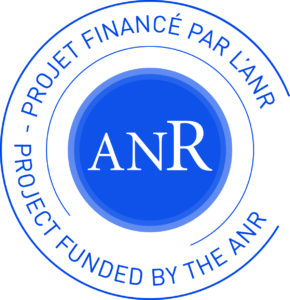
Nanoelectronics is undoubtedly one of the important driving forces of today’s consumer electronics and is at the heart of the semiconductor industry roadmap for downscaling and introducing new technologies. As a general trend, nanoelectronics experiments are shifting towards frequencies in the GHz range and beyond. These frequencies are now becoming comparable to the internal characteristic time scales that set the quantum dynamics of the devices, resulting in new opportunities for studying the dynamical aspects of quantum mechanics. However, the timescales are beyond what is presently achievable with standard radiofrequency electronics. With this project we would like to bridge this gap: we will leverage on the progress made on THz photon production and use clever photon to electron conversion devices to engineer THz electronic charge pulses that could be used in quantum nanoelectronics.cThe ability to generate voltage pulses with a duration as short as one picosecond will allow to access completely new regimes of quantum physics by studying its real time dynamical effects.
partners:
We regularly have open positions for PhD students or post-docs: motivated students who are interested in joining our research team please send email directly to christopher.bauerle@neel.cnrs.fr
M2 internship: We presently have an open M2 internship on the realization of electronic flying qubit architectures by propelling single electrons with sound. For more information click here or contact directly christopher.bauerle@neel.cnrs.fr
Department: QUEST
Team: Quantum Electronic Circuits Alps (QuantECA)
Status: Personnel Chercheur
Structure: CNRS
Position: Permanent
Email: Christopher.Bauerle@neel.cnrs.fr
Phone: 04 76 88 78 43
Office: M-113
